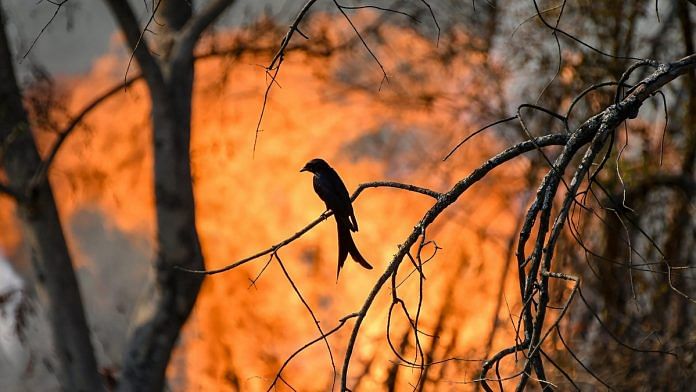New Delhi: Nature is resilient and adaptive, and given enough time, most species can adapt to small changes in their environment. However, humans are changing the atmospheric and environmental conditions at a rate never seen before in our planet’s history. And nature is finding it hard to keep up.
A recent study, published in Nature Communications last week, by a team of 64 scientists led by the Leibniz Institute for Zoo and Wildlife Research (Leibniz-IZW) in Germany has found that adaptive changes in birds and animals have been occurring at a far slower pace than climate change, putting a majority of species at risk of extinction.
The researchers evaluated over 10,000 published scientific papers and selected studies backed by long-term data records of various factors to arrive at their conclusion.
Previous studies have reported a variety of changes such as reproduction and migration patterns, changes in body size and eating habits across many species in recent years. The question this new study hoped to answer was whether such behavioural and bodily changes are adaptive, that is whether they are helping animals survive in changing climatic conditions.
Surface and atmosphere temperatures have been rising due to increasing greenhouse gas concentration in the atmosphere. Along with this, our seasons are also changing — summers today are more intense and last longer, spring arrives early and winters are shorter. Additionally, both heavy rainfall and spells of drought have become more frequent.
Avian response
Trends in the past couple of decades show that increasing global temperatures are shifting seasons to earlier dates. Particularly spring, which is an important time in the biological cycle of birds and animals, is arriving much earlier. This has led to changes in egg laying, nesting and migration patterns.
Leibniz Institute’s study focussed mainly on birds due to the scarcity of robust data available for other species.
“We demonstrate that in temperate regions, rising temperatures are associated with the shift in the timing of biological events to earlier dates,” said Viktoriia Radchuk (Leibniz-IZW), lead author of the study.
In most cases, such changes were found to help the species adapt and increase chances of survival. However, what truly matters is whether these changes are happening fast enough and being passed on to future generations. This is where the findings of this study make a worrisome revelation: Even in cases where adaptive changes are occurring, they are lagging behind the rate of climate change, putting a majority of species at risk of extinction.
The data analysed in the study included common species such as the great tit (Parus major), the European pied flycatcher (Ficedula hypoleuca) and the common magpie (Pica pica), which are known to cope with climate change relatively well.
“Adaptive responses among rare or endangered species remain to be analysed. We fear that the forecasts of population persistence for such species of conservation concern will be even more pessimistic,” said Stephanie Kramer-Schadt, head of the Department of Ecological Dynamics, Leibniz-IZW and one of the lead researchers on the study.
Lack of Indian research
The datasets used in the study were predominantly from the Northern Hemisphere due to the available long-term data records for both climatic conditions and ecological changes, including responses from species over multiple generations.
Such data is not available in India. Also, even if there was data, it would be difficult to separate the impact of climate crisis from other factors such as habitat destruction.
“There are very few studies that have contrasted the impacts of climate change and landscape change in India. Given this background, and in the absence of specific data, anecdotal data points to generalist species like Red-whiskered Bulbul expanding to several high elevations areas, while montane specialists like the Nilgiri Pipit have reduced in extent,” Robin V. V., assistant professor at IISER Tirupati, told ThePrint.
“It is clear that one of the primary goals should be to create funding mechanisms and support for the collection of long-term ecological data,” he added.
Other researchers echo similar concerns.
“There are very few studies on the impact of climate change on agriculture and water, let alone biodiversity … how climate change impacts biodiversity and ecosystem services, that cover water and agriculture also, should be of huge concern to the Indian research institutions and funders,” said Kamal Bawa, ecologist and distinguished professor at the University of Massachusetts, Boston.
In late 2015, following the Paris Agreement, the Indian government had announced that it will set up eight special observatories to study the impact of climate change on ecological systems under the Long Term Ecological Observatories (LETO) program.
While this is a step in the right direction, Robin clarified that despite such an announcement there are very few long-term studies supported at present, and none on birds.
Also read: Conspiracy theorists on Youtube are crowding the conversation on climate change, finds study







The biggest killer of birds are wind Mills. Do a Google scholar search for yourself and see all the scientific literature on bird mortality from wind farms. You will be mind blown. I’ve worked on bird conservation in two special protected areas in Europe and India.